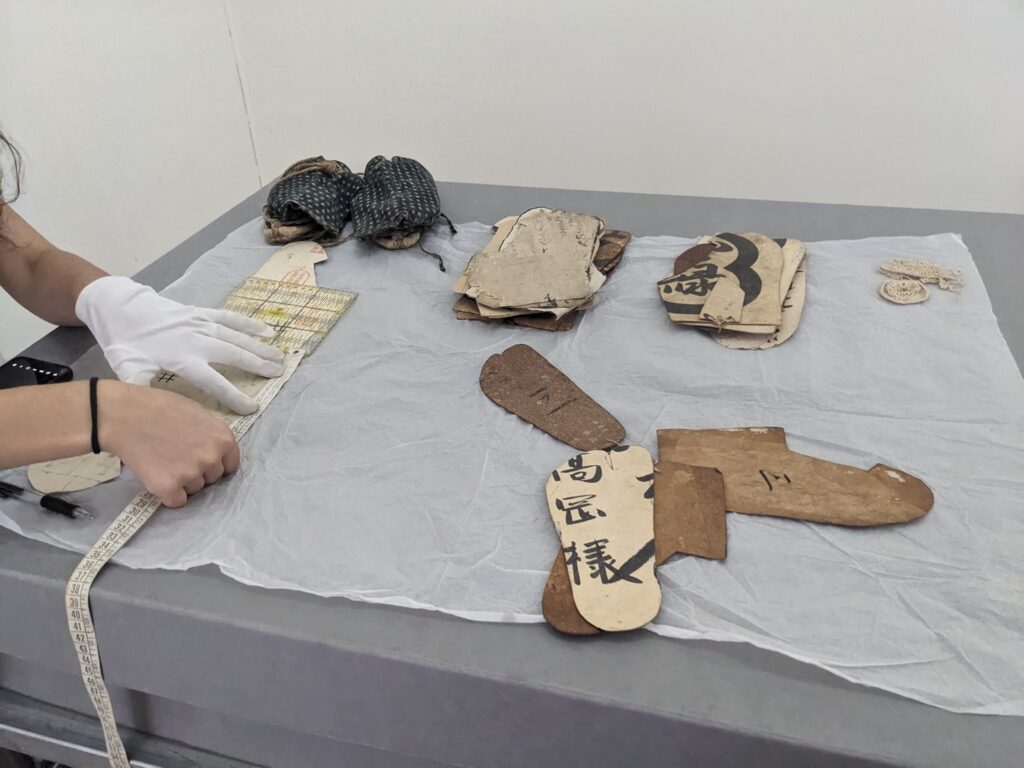year
1603-1868current location
ATOPOS cvc, Athens


Tabi Shoes Patterns
year
1603-1868current location
ATOPOS cvc, AthensTwo sets of cutting patterns in different sizes for Japanese tabi. Tabi are traditional Japanese sock or shoe styles that have a split between the big toe and the other toes, designed to be worn with thonged footwear such as geta and zōri. They are typically made of cotton and are often fastened with metal tabs or hooks at the back. Tabi are worn in various cultural settings, including with traditional clothing like kimono, and for activities such as martial arts, tea ceremonies, and festivals. Modern variations exist that are worn with regular shoes and the style can also be cut in leather and soled with rubber or leather (such as the popular tabi boot made by fashion designer Martin Margiela).
The tabi patterns in this set include tabi with no overlap at the back of the ankle to accommodate hooks. This can be easily added, or they can be stitched together at the back and left open on the front of the foot, as seen in a leather sample in the ATOPOS archive.
This collection of tabi patterns comes in many sizes for children to adults and are created on many different repurposed sheets of paper, including handmade paper, ledger paper, and wrapping paper. There are three pieces per pattern size (sole, inside, outside). Some of the pattern pieces have been treated with a fermented persimmon tannin dye (kakishibu), which would make the paper stiffer and more durable. Some are also textured on both sides, which might be due to the application of a fusible interfacing glue applied on one side to prevent slipping when being used.
Courtesy of ATOPOS cvc, Athens.
Research by Daphne Mohajer va Pesaran
Pattern making and rendering by Martina Ponzoni
